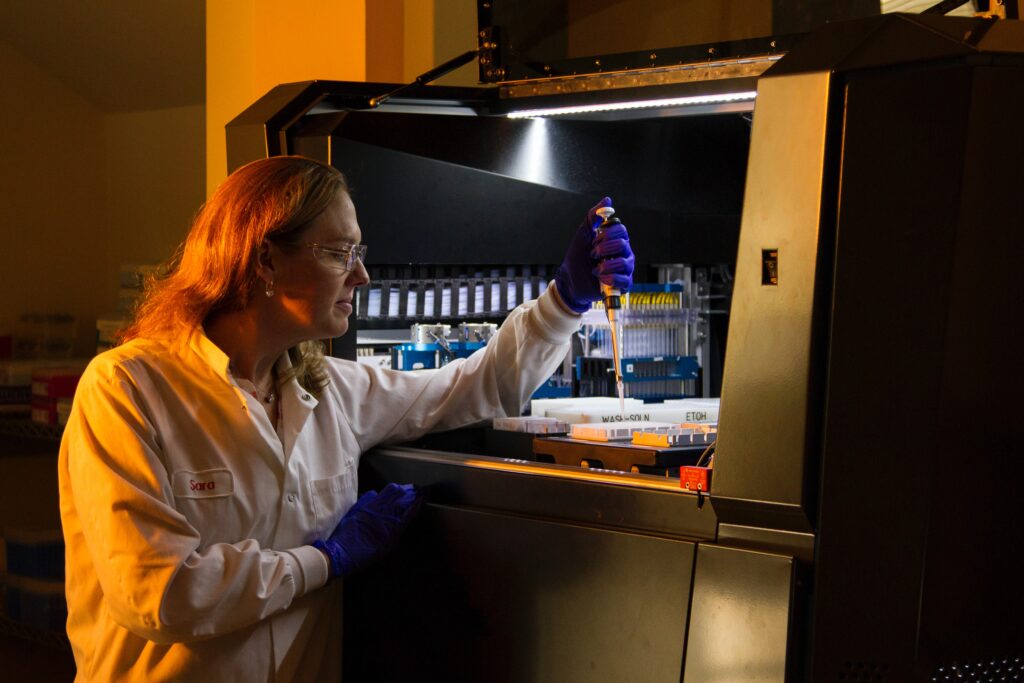Scientists, researchers, and healthcare innovators have a vested interest in pursuing the promise of genetic sequencing. But with the vast amount of data that comes from reading genes, you need to have advanced technology and software to make sense of the sequencing details.
Being able to decode the human genome and identify mutations or variants in DNA is a vital tool in the laboratory and research setting. But early abilities to sequence genes are not able to keep up with the torrent of data. This is where next generation sequencing enters the picture.
About Next Generation Sequencing
A new tool for scientists and researchers is NGS or next generation sequencing. It’s developed to allow DNA as well as RNA sequencing, with the promise of detecting new mutations or variants of interest.
As reported by Cancer Biology & Medicine, NGS makes it possible to sequence thousands of genes or an entire genome in a timeframe that’s practical for today’s research requirements.
Scientists are working with NGS to diagnose diseases in patients, get a glimpse of their prognosis, assist doctors in creating a therapeutic game plan when making decisions about which course of action might be best. They also use NGS when following up with patients, such as to rule out the return of a disease or to monitor a patient’s progress during therapy.
Using NGS for Clinical Applications
Next generation sequencing is finding a place in laboratories because it allows for massively parallel sequencing, which is a must given the enormous size of genomes under study.
The main steps involved in NGS include:
- DNA Fragmentation: A technician first needs to bust up a DNA sample into a set of shorter segments, tending to be 100-300 bp long, per Cancer Biology & Medicine. You can fragment DNA with enzymatic digestion, which is a mechanical process. Or, sonic waves can be targeted to break up the DNA.
- Preparing the Library: When you have the DNA fragments ready, you need to modify the segments. A technician prepares a sample-specific index to aid in identifying the patient according to the DNA sample taken from hi or her. You can add sequencing primers, which bind to the segments of DNA for faster, high-speed computation, analyzing the fragments.
- Sequencing the DNA: A powerful computer performs massively parallel sequencing in NGS systems. Systems use varying approaches. An Ion Torrent NGS sequencer relies on special sequencing chips, for example, while Illumina NGS sequencing systems employ flow cells. Then, it’s time to examine the results.
- Interpreting the Data from NGS: Processing the NGS-derived data from gene sequences is known as bioinformatics, where you identify and annotate variants. A technician compares the sequenced sample (which is currently unknown) against a known human genome reference.
- Application in a Clinical Setting: Of course, a central benefit for clinical settings is that you can target multiple targets simultaneously with massively parallel NGS. Cancer patients can be evaluated against a library of known mutations. The doctor can do more with a smaller tissue sample, which is a therapeutic boon.
To date, scientists have detected variants in illnesses such as hematopoietic leukemia, acute myeloid leukemia (AML), and myelodysplastic syndrome, for example, with each variant having its own implications in the clinic.
Future Use in Screening People in High-Risk Populations
One of the many intriguing promises of next generation sequencing is how researchers will be able to harness it for finding people in high-risk populations for cancers that are passed down genetically.
Discovering mutations quickly with fast sequencing systems allows doctors to then prescribe therapies that will target cancer treatments much more precisely. From lung cancer to breast cancer and many other hereditary cancers, NGS based on samples taken with a liquid biopsy can give patients and their loved ones some hope for a brighter future.

